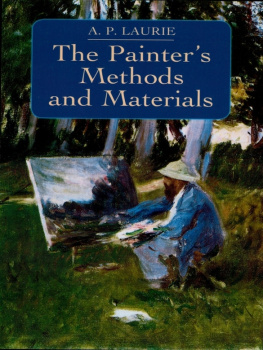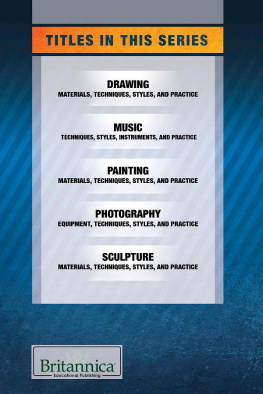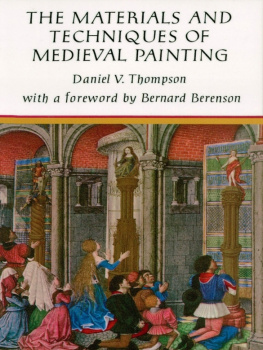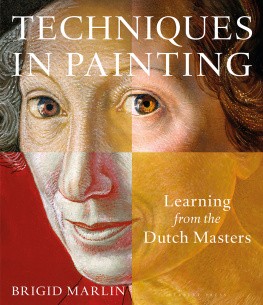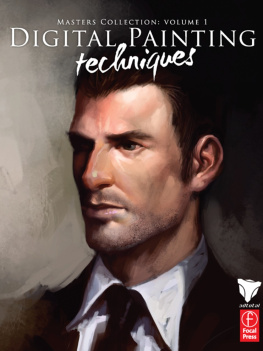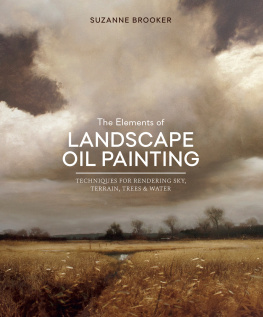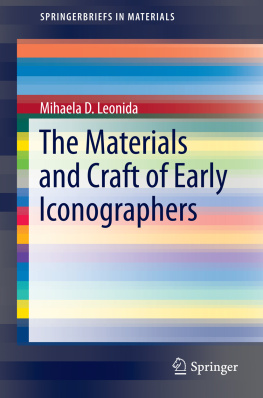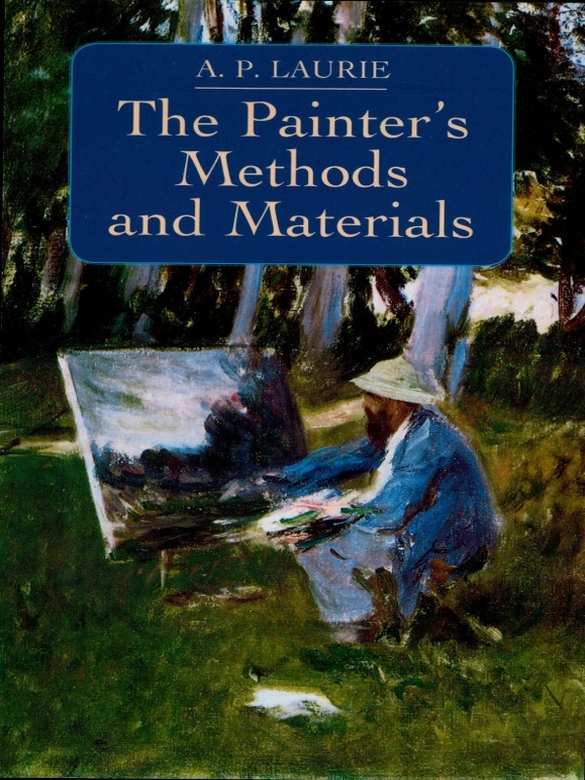CONCLUSION
traditions handed down enabled Van Eyck and his followers to adopt methods which we have found to be optically sound.
Later, when the tempera under-painting is abandoned and the oil paint is laid direct on the gesso, we still find the same reliance on the white gesso to correct the defects developed by the oil in time ; in fact, the use in oil of a water-colour technique. When later the practice of solid white for high lights becomes more universal, great care is taken to grind the white stiffly with a minimum of oil. But with the replacement of the white gesso panel by canvas, this gesso was, in course of time, replaced by an oil priming, and as the fundamental optical principles involved were not understood, the methods were not adapted to the new conditions. But even here we find that all through the history of painting, including many of our modern painters, sound optical principles have been followed, more perhaps by instinct than by reason.
In this gradual losing of sound tradition and sound scientific principles, the man of science has perhaps not been without blame. The variety of new pigments invented owing to the rapid development of chemistry in the last hundred and fifty years, naturally made him turn his attention to the examination of these pigments, in order to discover which were permanent and which fugitive, and the results of his experiments have been applied by the painter in oil without full understanding. The wrong and right uses of such pigments as cobalt blue when ground in oil is a striking instance.
I therefore attempt in this book to emphasize the other considerations due to changes not in the pigment, but in the oil itself, which must guide the painter in oils, if he is to produce a picture which will not rapidly lower in tone.
Of modern painters in oil, the Pre-Raphaelites alone seem to have thought out and adopted a definite technique with a view to obtaining permanent results, a technique, as we have seen, sound in principle but limited in power of expression. It is here that the difficulty lies to keep sound scientific principles in view, while obtaining full freedom of expression. The study of the problem seems to have been abandoned in despair by the painter in oil, and while the modern painters in tempera have been striving to be, above all, craftsmen with an accurate knowledge of the properties of their materials, the painter in oil seems, in too many cases, to have given up any attempt to master the scientific properties of his materials.
I have before me, as I write, a landscape painted by a famous French artist, in which he has deliberately prepared a priming of asphaltum on which he has painted his picture, with, it is unnecessary to say, appalling results.
In the book on oil painting in this series by Mr. Solomon, R.A., and the book written recently by Mr. Harold Speed, we find serious attempts to bring the oil painter back to the study of his art as a craftsman. He must not be satisfied merely with the knowledge of how to express himself in paint, but must also study the properties of his materials and their limitations, and so modify his methods as to produce not only a beautiful picture, but a good job which will stand up to the test of time.
In this book I have tried as far as possible to deal rather with methods than materials, only describing materials in so far as information will be of use to the artist, endeavouring to write something useful to the artist craftsman, and as far as I can to guide him as a craftsman to the proper use of his materials.
In order to do this I have had as far as possible to recover traditional methods, and combine them with modern practice. I have also avoided the description of new and untried materials. The slow chemical actions over long periods of time and exposure to light, moisture, and oxygen, and the gradual physical changes taking place, are so obscure that it is safer to rely on materials which have been tested and used throughout the centuries than to assume too quickly that new materials and new methods will stand the test of time.
Let the painter in oil study his medium by making simple experiments for himself on the amount of oil necessary, the effect of darkness on the ground, and of the thickness of the layer of oil paint and so on. By shutting up his experiments in a box together with a jug of water, he will be able in a few months to obtain results which will guide him in the choice of his palette and in the amount of oil advisable. The way in which he should lay on his paint will become more evident, and on these lines he should be able to obtain good craftsmanship without cramping his style. There is no universal method of overcoming the bad properties of the oil medium. It is a good servant, but a bad master.
It is evident that when we look at the whole history of painting in oil, the method which has proved most successful in avoiding lowering of tone throughout the centuries, has been the method in which the oil paint is translucent and is painted over a layer of white or bright light colour, whether in gesso, tempera, or oil, a method which differs widely from the method of using oil paint which is most universal to-day, in which solid opaque paint is aimed at. The artist, painting in this modern method, would be well advised, in my opinion, to limit his palette to the more opaque pigments as shown in the table given in Chapter IX. By doing this and avoiding excess of oil he should be able to avoid serious lowering of tone.
The chapters on tempera, fresco, and wall painting I have tried to make useful by combining a description of the older methods with an account of modern practice from sound practitioners. Doubtless different painters have different methods, but in each case the method selected is that of a sound craftsman, which should therefore prove a useful guide.
The water-colour painter has three problemsthe good and pure quality of his paper, the permanency of his pigments, and the absence of an excess of hygroscopic agents like honey and glycerin in his medium. He can obtain excellent and pure paper and select a list of reliable pigments, and his mediumgum-arabichas also proved reliable under the test of time.
Unfortunately the demand for moist colours requires the loading of the medium with hygroscopic materials like glycerin. While this has not been proved to be injurious, it is at least probable that this practice will diminish the life of modern water-colour pictures as compared with the older ones that were painted with cake colours. It is a matter well worthy of the consideration of the Water-colour Society, whether a return to the old cake colours is not possible.
In the discussion of fresco and tempera, I have been much indebted to modern artists and to the publications of the Tempera Society. The test of centuries has proved egg to be an excellent and reliable medium, so that the question as to how far present-day methods of expression can be carried out in tempera is of profound interest to the artist.
In the course of this book I have here and there thrown out suggestions to the artists colourman. On the subject of cracking, I have contented myself with advice to the artist. The causes of cracking, from the point of view of the artists colourman who grinds pigments in oil, are only beginning to be understood. The properties of the different drying oils, the proportion of pigment to oil, the laying of hard coats over soft coats, and the size and the grading of the pigment grains, all have their influence, and when thoroughly understood may result in profoundly modifying the methods of the preparation of colours for use. The diminution of the yellowing of the oil film by the selection of the most suitable oil, and the introduction of resin, is also worthy of very careful study. It would be a great gain if, with the object of reducing the yellowing of the medium, a highly resinous vehicle could be made which at the same time is workable under the brush.

